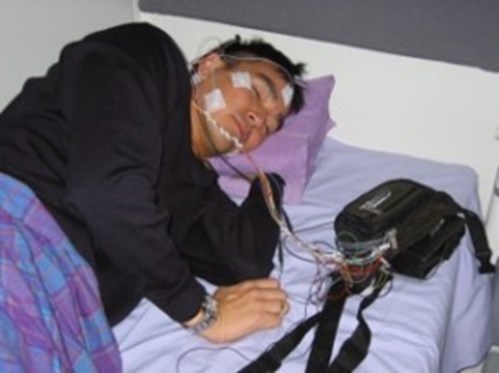Pilots’ Sleep on Boeing 777-200 ER Delivery Flights
In 2002 the Sleep/Wake Research conducted a study monitoring the sleep of 21 pilots on ultra-long range delivery flights of new aircraft from the Boeing plant in Everett (WA, USA) to Singapore or Kuala Lumpur. The study was conducted in collaboration with Singapore Airlines and Malaysia Airlines. For each pilot, polysomnography was used to monitor sleep for one night in a layover hotel and during a 7-hour rest break during the flight.
Key findings include that sleep in-flight was lighter and more disrupted, with lower sleep efficiency and minimal slow-wave sleep, compared to sleep in the hotel. In-flight sleep was also shorter and more disrupted among older pilots and less sleep was obtained by pilots who took the first rest break, compared to those who took the second rest break.
Factors Affecting the Sleep of Economy Class Passengers on Long Haul Flights
This literature review revealed a total absence of research on the sleep of economy class passengers, although there was some research relating to their general health or well-being, for example, the impact of air quality on passenger well-being. (All sleep research focused on flight crew.) Therefore, to be able to make suggestions about the possible impact of factors on the sleep of passengers, literature from other environments was often considered.
It was concluded that it is reasonable to expect that the sleep of economy class passengers could be improved by lowering cabin altitudes, ensuring that temperatures remain within the range of thermal comfort throughout the flight, minimising noise events, and improving seat design.
